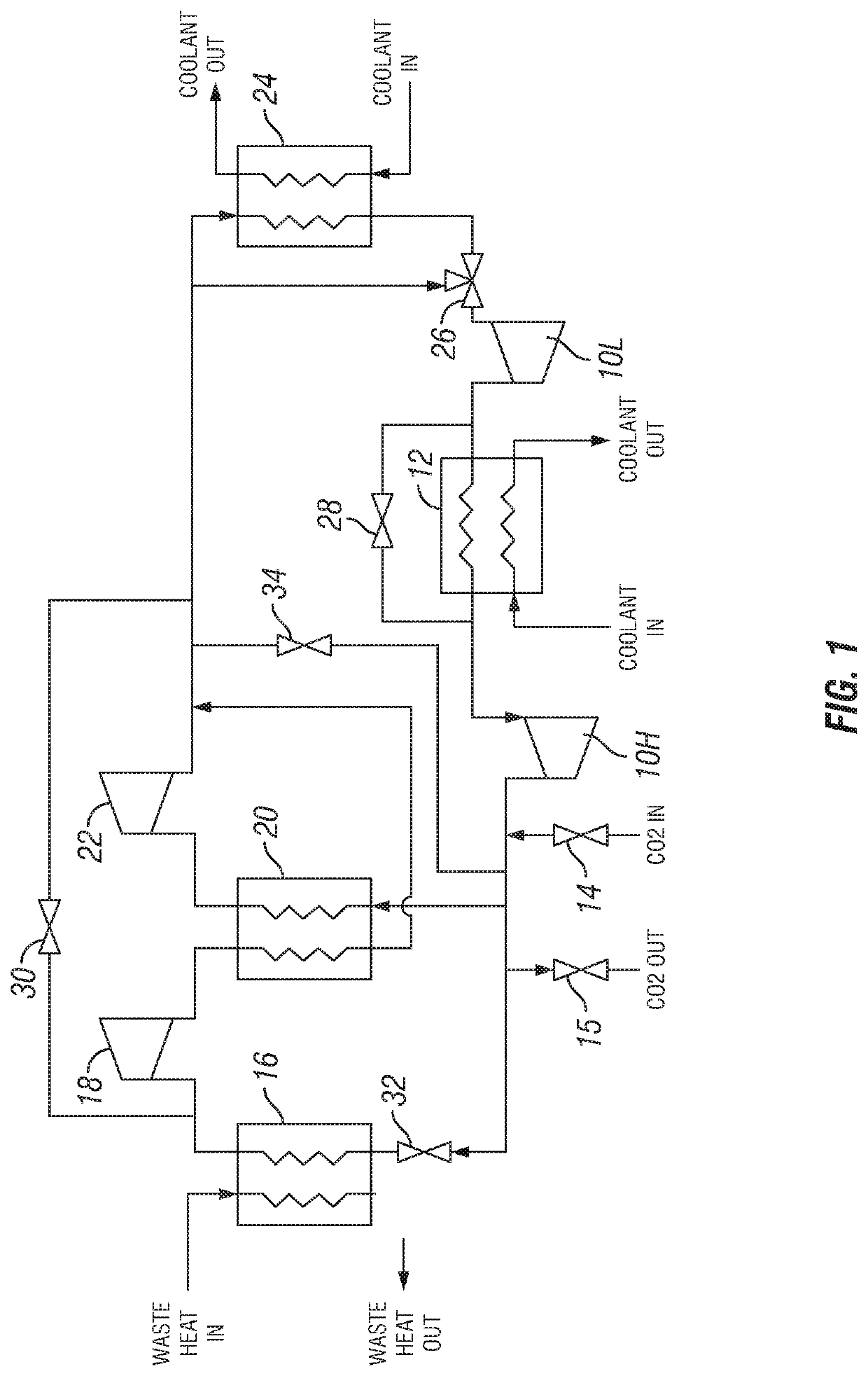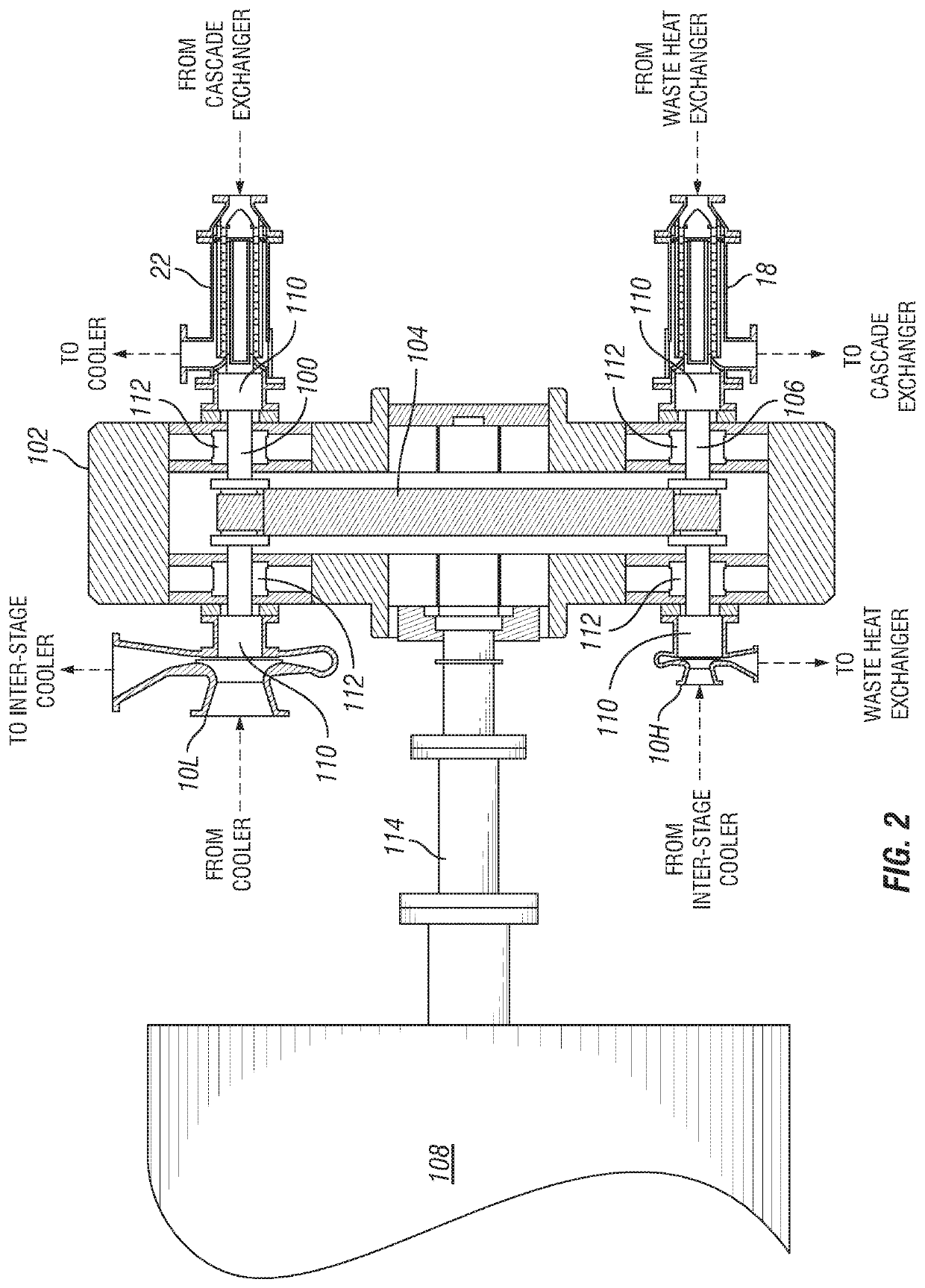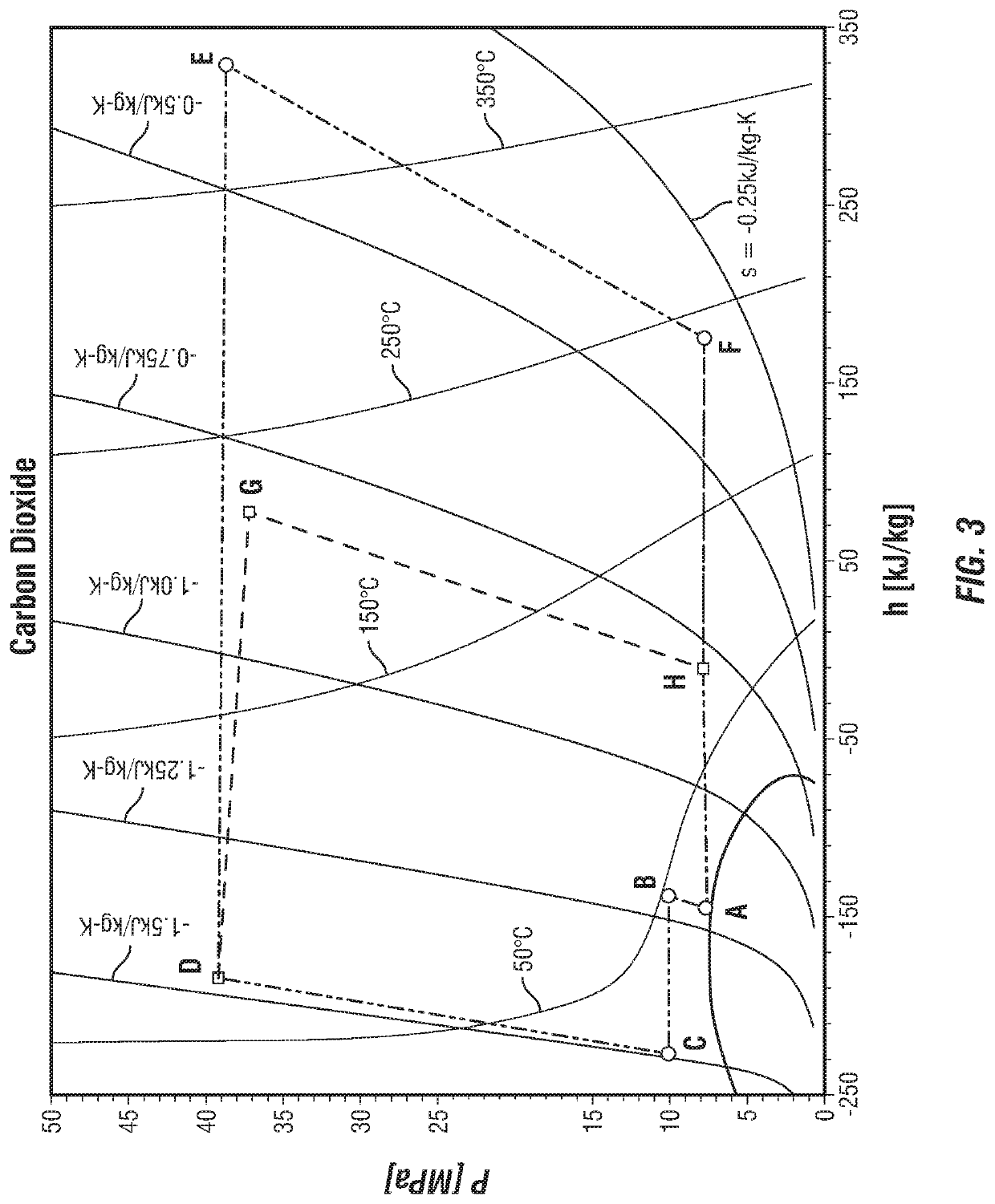Intercooled Cascade Cycle Waste Heat Recovery System
a waste heat recovery and cascade cycle technology, applied in the direction of steam engine plants, gas turbine plants, machines/engines, etc., can solve the problems of waste heat recovery systems with additional limitations, waste heat recovery systems with higher cost per unit of power produced, and long response time to initial thermal input, etc., to improve the design of high-density working fluid systems, improve efficiency, and reduce size
- Summary
- Abstract
- Description
- Claims
- Application Information
AI Technical Summary
Benefits of technology
Problems solved by technology
Method used
Image
Examples
Embodiment Construction
[0022]As used herein, “a” and “an” means one or more than one unless otherwise stated. As it is used in the claims or specification, the term “or” is intended to encompass both exclusive and inclusive cases. In other words, “A or B” is intended to be synonymous with “at least one of A and B,” unless otherwise expressly specified herein.
[0023]The power generation cycle disclosed herein uses a working fluid in piping. Directions of fluid flow through said piping during steady state operations of the power cycle are indicated by arrow in the figures herein provided. One of ordinary skill in the art of power systems would understand the direction even without said arrows as moving from regions of higher pressure to regions of lower pressure. A person of skill in the art would also understand the meaning of upstream and downstream.
[0024]Presented herein is a power generation system using high-density working fluid, such as supercritical carbon dioxide. This system is adapted to overcome ...
PUM
 Login to View More
Login to View More Abstract
Description
Claims
Application Information
 Login to View More
Login to View More - R&D
- Intellectual Property
- Life Sciences
- Materials
- Tech Scout
- Unparalleled Data Quality
- Higher Quality Content
- 60% Fewer Hallucinations
Browse by: Latest US Patents, China's latest patents, Technical Efficacy Thesaurus, Application Domain, Technology Topic, Popular Technical Reports.
© 2025 PatSnap. All rights reserved.Legal|Privacy policy|Modern Slavery Act Transparency Statement|Sitemap|About US| Contact US: help@patsnap.com



